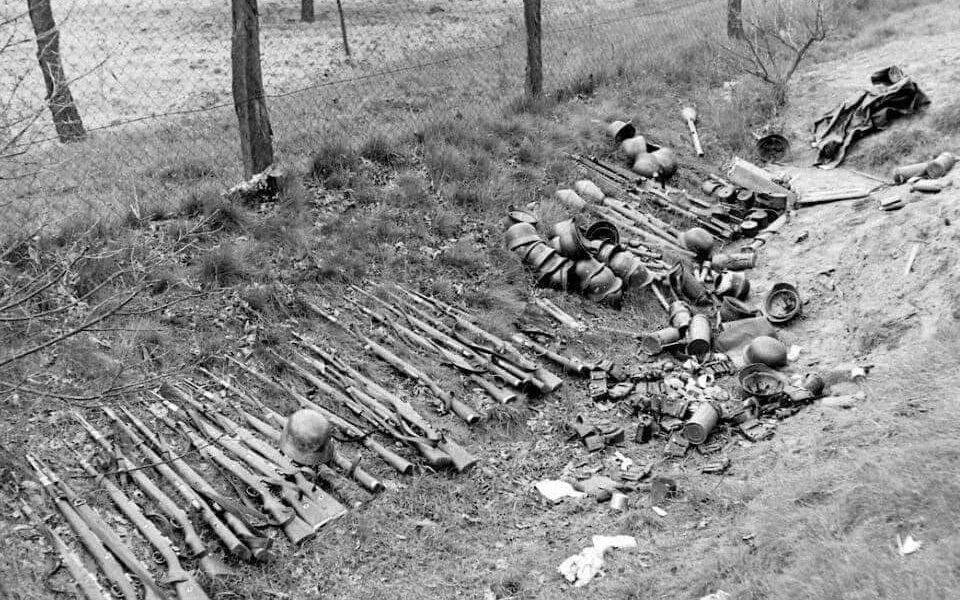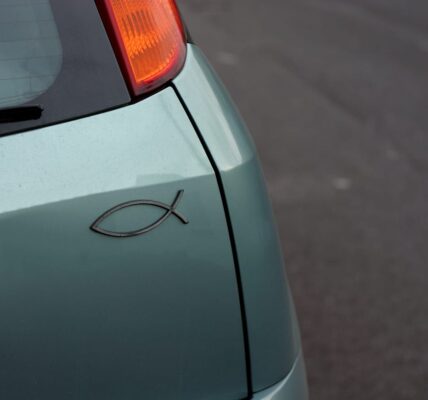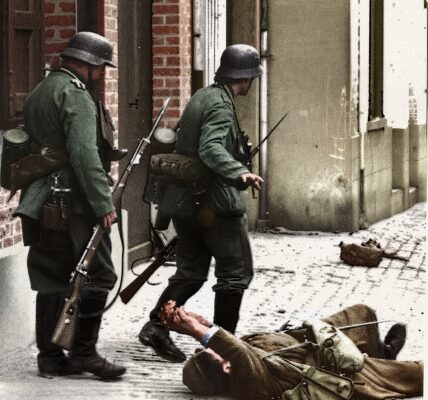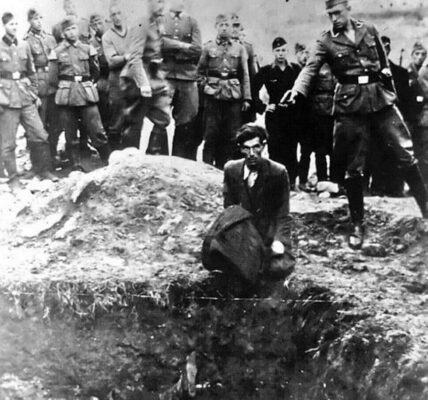
The photo shows dozens of Karabiner 98k rifles lying neatly in rows
at the edge of a wire fence, presumably at the border of a garden or field . Next to them are piles of steel helmets (M35/M40/M42) , canteens, mess kits, ammunition and belt pouches , and a few boots and coats. No spent cartridges, no visible impact marks – everything suggests an orderly surrender , not a chaotic battle.
What does this order tell us?
In late April/early May 1945, Allied troops set up collection points for weapons in captured towns and villages. German soldiers – often a mix of Wehrmacht and Volkssturm (People’s Storm) personnel – had to surrender their weapons and equipment, were registered, and then taken away. Such scenes were repeated in many places at the edges of villages, farms, barracks, and bridges.
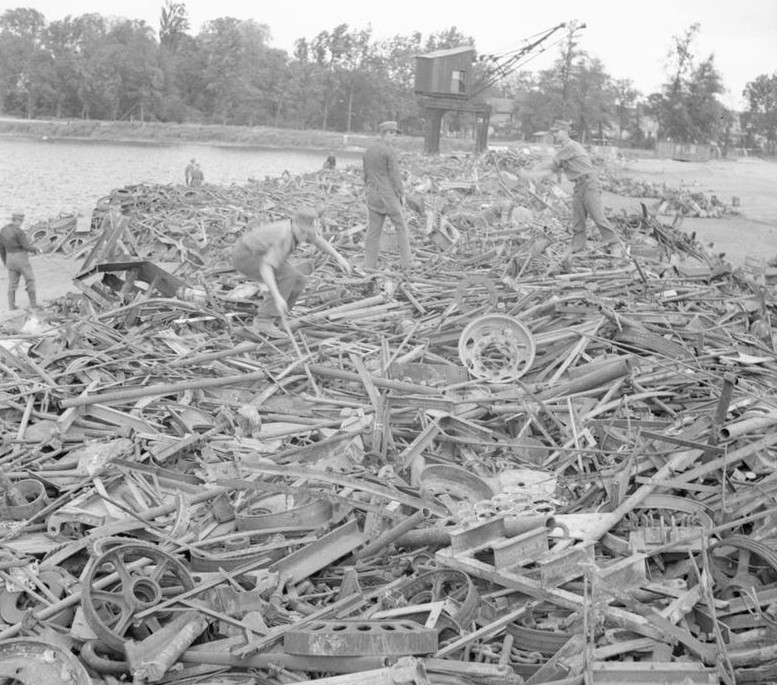
Why were so many traces left behind?
-
Collective surrender – As per regulations, weapons were sorted by type, counted, and later removed or destroyed.
-
Units disbanded – supply lines collapsed; marching columns dropped heavy loads to get home faster.
-
Clean-up after the occupation – the military government and local authorities had leftover stocks collected; this created veritable “ cemeteries of equipment ”.

Technical notes in the image
-
K98k : long stock, bolt handle, carrying strap – standard rifle of the Wehrmacht.
-
Steel helmet : characteristic, stackable shape; several variants are recognizable.
-
Field kitchen/catering equipment (canteens, mess kits) and ammunition equipment indicate the surrender of an entire unit.
The broader context
As the Allies advanced, such images appeared everywhere in Germany and neighboring regions. Iconic series show, for example, assembly points at border and road checkpoints where soldiers laid down their rifles in rows before being registered. These “silent landscapes of wood and steel” mark the transition from war to occupation – and make the end tangible.

